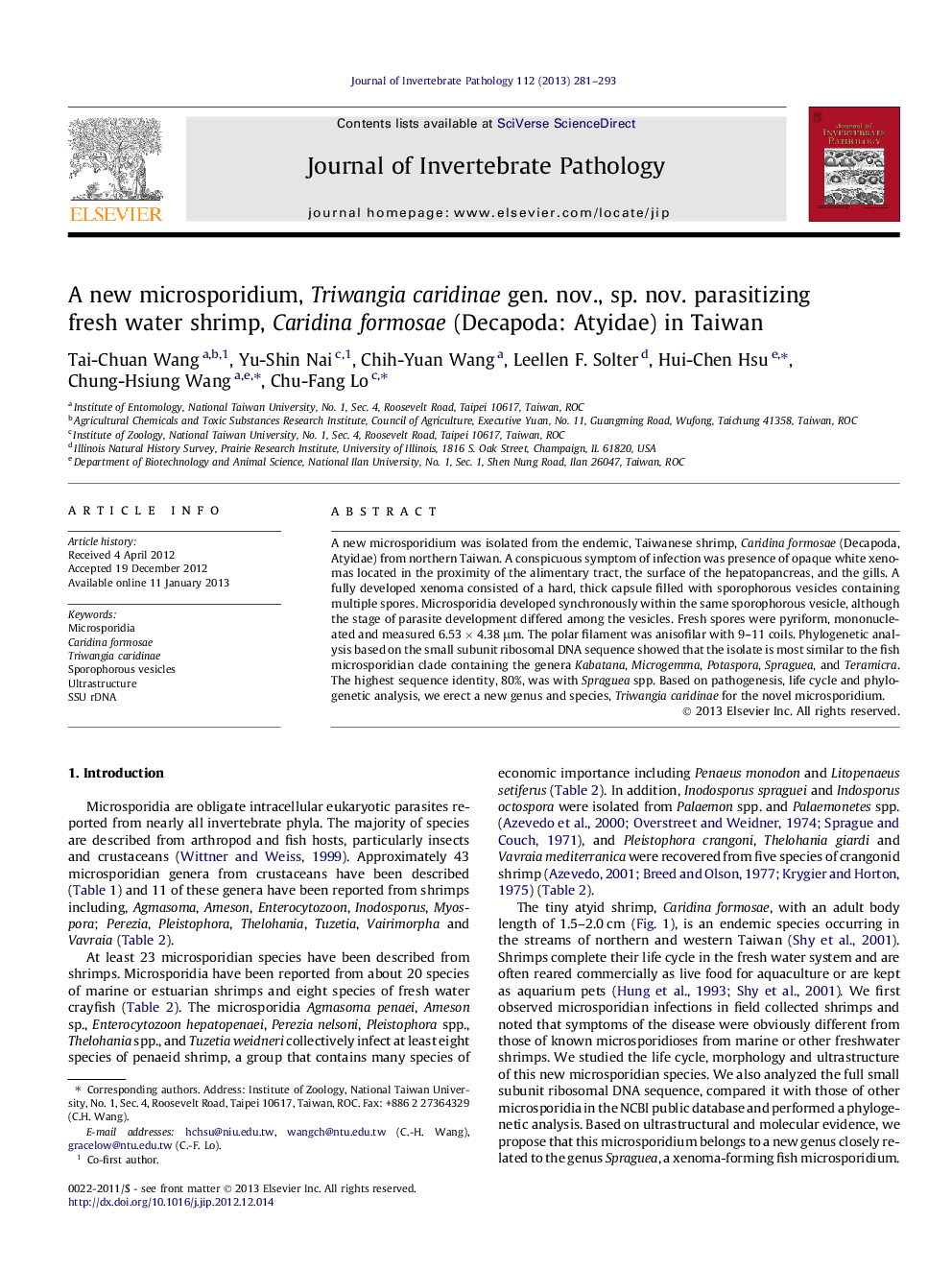| Article ID | Journal | Published Year | Pages | File Type |
|---|---|---|---|---|
| 6389574 | Journal of Invertebrate Pathology | 2013 | 13 Pages |
A new microsporidium was isolated from the endemic, Taiwanese shrimp, Caridina formosae (Decapoda, Atyidae) from northern Taiwan. A conspicuous symptom of infection was presence of opaque white xenomas located in the proximity of the alimentary tract, the surface of the hepatopancreas, and the gills. A fully developed xenoma consisted of a hard, thick capsule filled with sporophorous vesicles containing multiple spores. Microsporidia developed synchronously within the same sporophorous vesicle, although the stage of parasite development differed among the vesicles. Fresh spores were pyriform, mononucleated and measured 6.53 Ã 4.38 μm. The polar filament was anisofilar with 9-11 coils. Phylogenetic analysis based on the small subunit ribosomal DNA sequence showed that the isolate is most similar to the fish microsporidian clade containing the genera Kabatana, Microgemma, Potaspora, Spraguea, and Teramicra. The highest sequence identity, 80%, was with Spraguea spp. Based on pathogenesis, life cycle and phylogenetic analysis, we erect a new genus and species, Triwangia caridinae for the novel microsporidium.
Graphical abstractDownload full-size imageHighlights⺠A microsporidium parasitizing endemic shrimps in Taiwan is described and assigned to a new genus Triwangia. ⺠Triwangia caridinae is the microsporidium known to produce xenomas in shrimps. ⺠SSUrDNA-based phylogenetic analyses provisionally clustered Triwangia caridinae with fish microsporidia.
